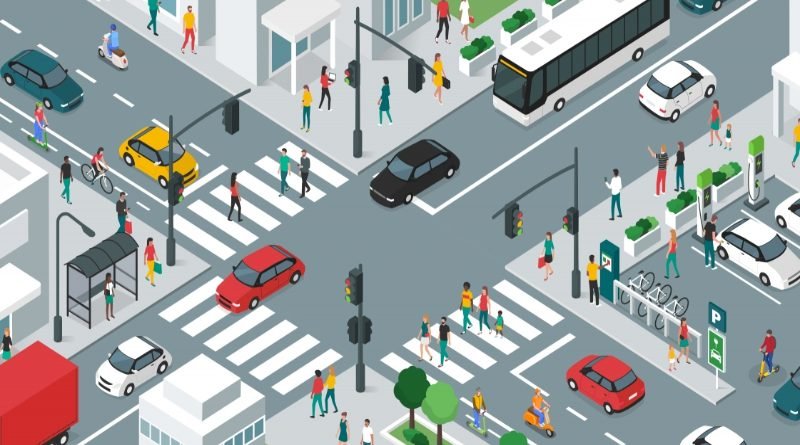Designing Roads for People
How Speed Bumps Make a Difference
Our roadways are more than just conduits for vehicles; they are vital parts of our communities, impacting everything from safety to the environment to the overall quality of life. When it comes to designing roads, the focus should always be on creating spaces that prioritize the needs of people, not just cars.
One effective way to achieve this goal is by incorporating speed bumps for road projects. In this article, we’ll explore how speed bumps make a significant difference in designing roads for people.
The Need for People-Centric Road Design
In many cities worldwide, the emphasis has long been on designing roads to accommodate the ever-increasing flow of vehicular traffic. High-speed roads, wide lanes, and minimal disruptions to traffic have been the norm. However, this car-centric approach has had adverse effects on communities.
- Safety: High-speed roads are unsafe for pedestrians, cyclists, and even motorists. Speeding vehicles pose a significant risk to everyone on the road.
- Air Quality: The continuous flow of fast-moving vehicles contributes to air pollution, harming the environment and the health of residents living near busy roads.
- Noise Pollution: Speeding vehicles generate noise pollution, affecting the well-being of people living on these roads.
- Community Cohesion: Fast roads create physical barriers within communities, making it difficult for people to interact and reducing the sense of belonging.
- Quality of Life: High-speed roads can lead to a decline in residents’ overall quality of life, making neighborhoods less desirable places to live.
To address these issues, we need to shift our focus from designing roads for vehicles to designing roads for people. Speed bumps are a simple yet effective tool for achieving this transition.
The Power of Speed Bumps
Speed bumps are physical traffic calming devices that force drivers to slow down when they approach them. They are typically made of asphalt or rubber and strategically placed along roadways. Here’s how speed bumps make a significant difference:
Enhanced Safety
The primary purpose of speed bumps is to reduce vehicle speeds. By doing so, they significantly enhance safety on the road. Slower speeds reduce the likelihood and severity of accidents, making roads safer for everyone, especially pedestrians and cyclists.
Encouraging Active Transportation
With safer road conditions, people are more inclined to choose active modes of transportation such as walking or cycling. Speed bumps make streets more pedestrian and cyclist-friendly, encouraging healthier and more sustainable forms of mobility.
Reduced Noise Pollution
Slower vehicles mean reduced noise pollution. This is particularly important for communities living near busy roads. Speed bumps help create quieter, more pleasant living environments, improving the well-being of residents.
Air Quality Improvement
Reducing vehicle speeds also contributes to improved air quality. Slower vehicles consume less fuel and emit fewer pollutants, resulting in cleaner air and a healthier environment.
Enhanced Community Life
Speed bumps can transform fast, intimidating roads into safer, more inviting spaces for social interaction. This promotes community cohesion, as residents are likelier to engage with their neighbors and enjoy shared public spaces.
Quality of Life Benefits
Ultimately, speed bumps contribute to an overall improvement in the quality of life for residents in areas where they are implemented. Safer roads, cleaner air, reduced noise, and a stronger sense of community make for more desirable places to live.
Implementing Speed Bumps Effectively
While speed bumps have numerous benefits, their implementation requires careful consideration. Here are some key factors to keep in mind:
- Location: Speed bumps should be strategically placed in areas with a history of speeding or high pedestrian activity.
- Design: Speed bumps should be well-designed to be effective without causing vehicle discomfort or damage.
- Communication: Proper signage and communication with residents are essential to inform them about the reasons behind the installation of speed bumps.
- Maintenance: Regular maintenance is necessary to ensure the effectiveness and safety of speed bumps.
Conclusion
Designing roads for people rather than just vehicles is crucial for building safer, healthier, and more vibrant communities. Speed bumps are a valuable tool in achieving this goal, as they reduce speeds, enhance safety, and create more people-friendly environments. By prioritizing the needs of pedestrians, cyclists, and residents, we can build roads that benefit everyone and contribute to a higher quality of life for all. It’s time to slow down and make our streets safer and more welcoming places for people.
Also visit Digital Global Times for more quality informative content.

